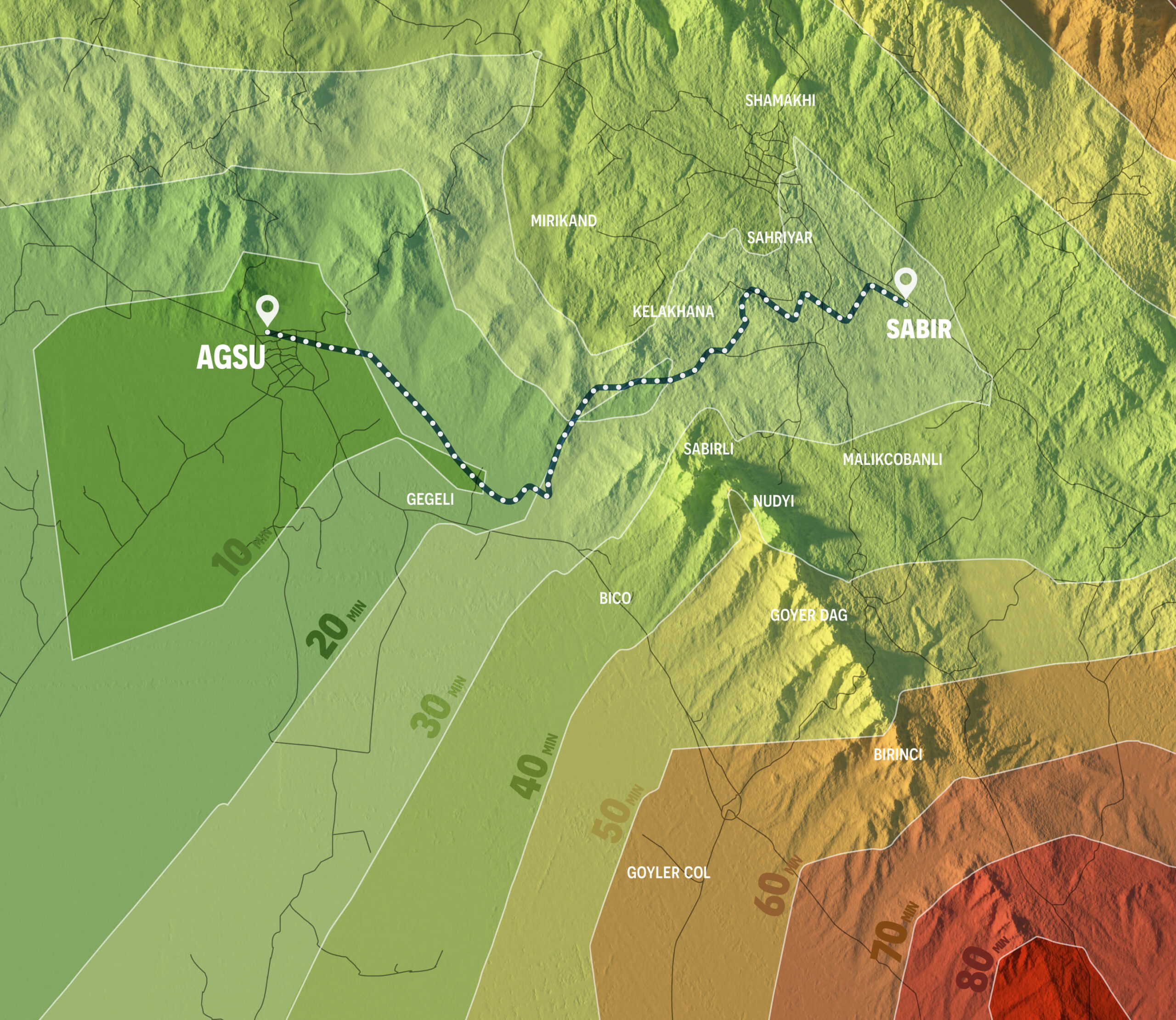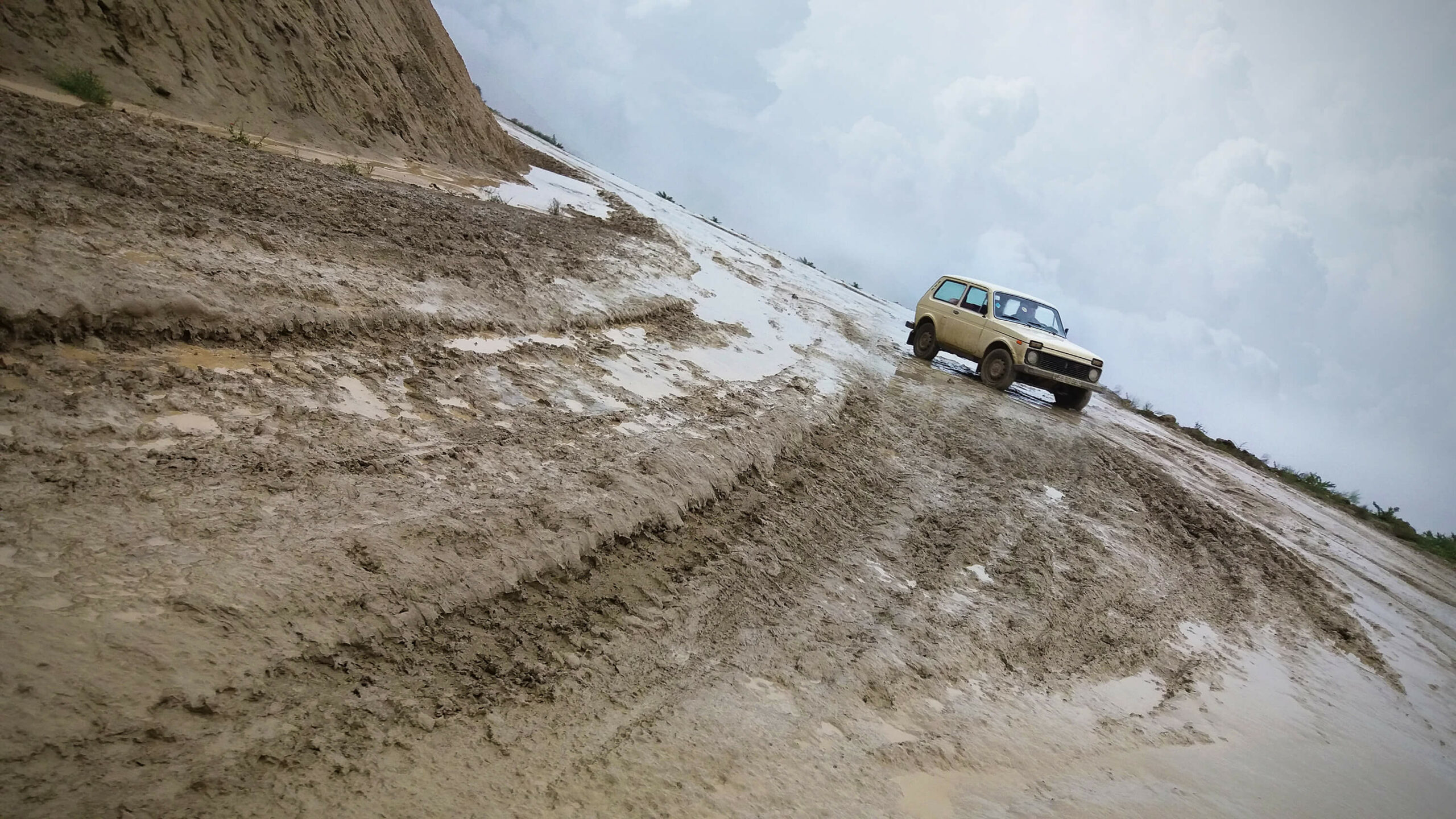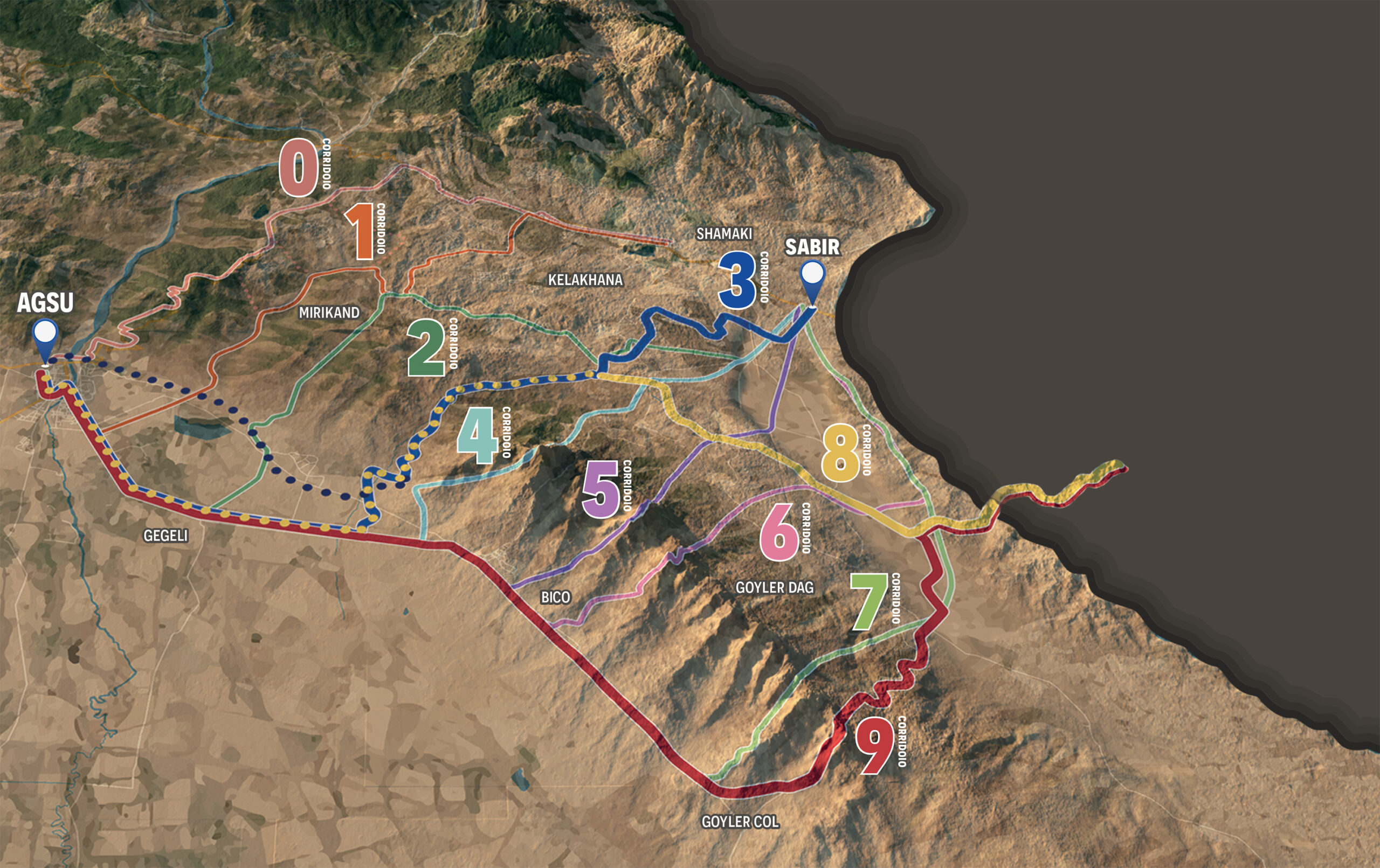The Baku-Shamakhi road connection in the Shamakhi-Agsu section
Azerbaijan - 34 Km of future along the silk road
In the ‘Third Highway Azerbaijan Project’, ‘Azeravtoyol’ (the body for the management of State Roads in Azerbaijan) assigned NET Engineering with the feasibility study of the Shamakhi-Agsu road section in the strategic corridor that links the Caspian Sea to Georgia in the pre-Caucasian area of Azerbaijan.
The study was financed by the World Bank (IBRD) and the International Development Association and falls within the wider context of investment along the so-called ‘Silk Road’. Over the centuries, this road has brought culture, goods, spices and wealth to the Mediterranean basin and is now a ‘sensitive’ element in the Asian geopolitical chessboard.
The work is part of an especially delicate regional geomorphological context. It’s also a central element for local economic development and is significant for regional development as a potential driver of growth for a rural area and a tourist-minded vocation which is currently underdeveloped compared to the urbanised areas of the country.
“In 2016, the preparations for the first Formula 1 Grand Prix were in full swing, the roads of the city circuit were being asphalted and the brass in luxury hotels was polished yet, less than 200 kms away in the countryside of Shamakhi, children were tending goats and their parents were taking apples to market, travelling along muddy roads up in the mountains.”
The new road connection was designed to eliminate the last bottleneck of the M4 road corridor M4, the most complex and challenging – 34 km of narrow road that winds up the clayey slopes of the pre-Caucasians, unstable, subject to frequent earthquakes with narrow hairpin bends where erosion and landslides are almost the norm. A 34 km-section inaccessible to heavy traffic which crosses an area with significant tourist, naturalist and cultural value.

Shamakhi is on a vast upland with hilly terrain dotted with pastures and vineyards. Agsu is situated at an altitude about 700 metres lower, in the large alluvial plain of the River Kura where Iran lies on the other side. There is a long, clayey escarpment in the middle, furrowed by gullies of narrow valleys with steep, ‘ribbed’ slopes.
“Shamakhi was the old capital of the governorship of Azerbaijan in Imperial Russia until the terrible earthquake of 1859 which destroyed the city. After this, the capital was transferred to Baku.”
The project had two distinct stages.
The first stage aimed to sound out all the possible alternative routes that could arguably connect Shamakhi to Agsu, including the so-called ‘Option 0’, the rehabilitation of the existing route. Ten different alternatives were considered, ten routes with different geometric-functional features, different structures necessary (viaducts, bridges and tunnels), different constraints imposed by the area, different costs and opportunities. The extensive, complex analysis led to three ‘feasible’ alternatives, worth further detailed study.
The second stage made an in-depth analysis of the three alternatives based on additional geological and geotechnical surveys, environmental assessments, and estimates relating to the demand for movement and the impact on mobility.
In addition, discussions with the technical experts of the World Bank also revealed the local community’s need to assess ‘sharing’ the project and further investigation of the impact on cultural, religious and artistic artefacts.
“The support of an expert on the behaviour of tortoises living in the area was required as the construction of a road would have a significant impact for them.”
“Discussions with local representatives to understand their needs and the social dynamics that such a project can trigger were stimulating. We made a detailed study of the position of the junctions along the route as these were, in effect, ‘entrances’ for the villages to areas that, up to that time, had been considered distant.”

The work posed difficult challenges, overcome with targeted solutions – the introduction of ‘innovative’ project and instrument operating systems integrated with traditional methods, the adaptation of the proposed solutions to the real technical ability of local businesses, the establishment of a harmonious relationship of mutual trust with the client and the World Bank through constant visits to the area and continuous communication, which enabled the development of a shared path despite sometimes very different views, methods and backgrounds. The system engineering approach typical of NET Engineering enabled Azeravtoyol to analyse the current and future mobility requirements, give a consistent response and check the environmental, economic, financial and social sustainability.
The development of the project helped the understanding of how much a road connection can contribute to change in depressed areas,
requiring the NET Engineering project managers to evaluate alternative routes not only based on technical and orographic constraints but also on the connection opportunities between currently abandoned, poorly connected villages. Thus, the road becomes an element which guarantees access to education, support for families, who can reach local markets more easily, and the development of tourism, with greater links from and to Baku, the capital.
Although impoverished, the areas of operation were ‘seen first-hand’ (and long sections ‘made on foot’ several times) so that there were the solid elements forming the base of the study of the macro alternatives and the choice of the route. This direct experience in the field, both professional and human, put the NET Engineering designers before unexpected scenarios and emotional times, creating an invisible connection of respect, harmony and complicity.
